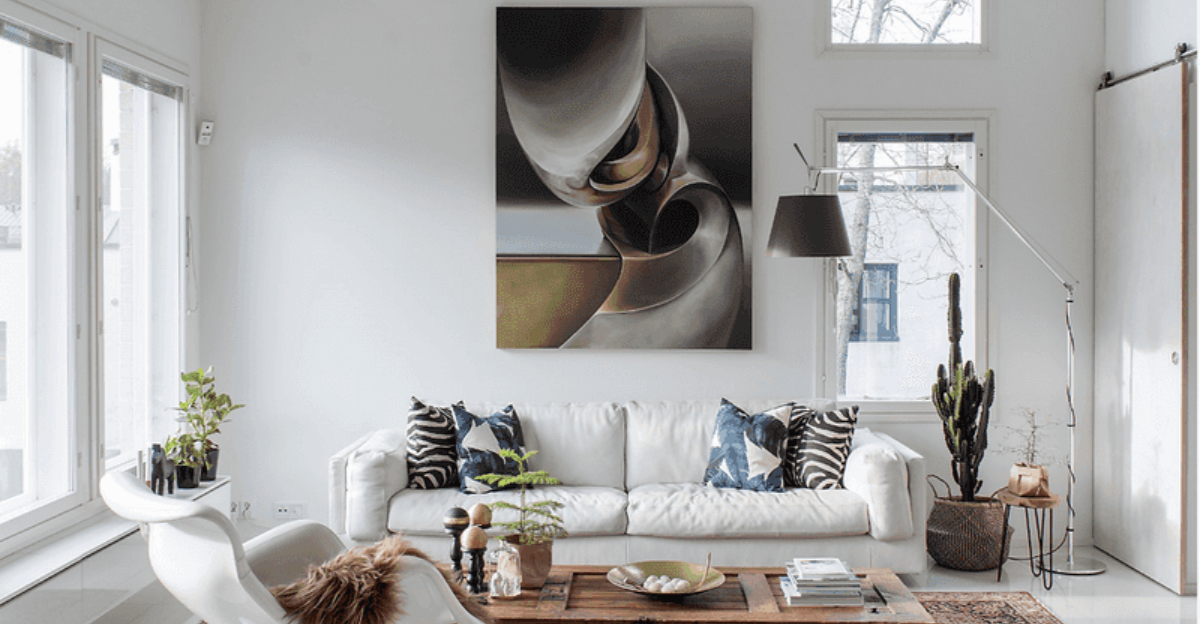Mixing different decades in interior design creates spaces with personality, depth, and storytelling power.
By combining elements from various eras, you can craft a home that feels collected over time rather than purchased all at once. Professional designers have mastered this art of temporal fusion, and they’re sharing their secrets for creating harmonious, multi-era spaces that exude character and style.
1. Start With a Neutral Base to Anchor Different Eras
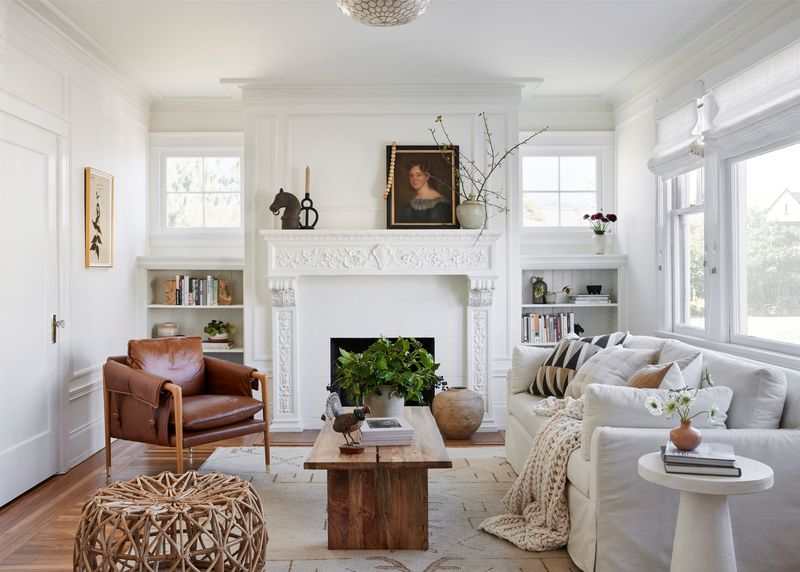
Imagine building a time-traveling stage for your favorite furniture pieces. A neutral backdrop—think warm whites, soft grays, or gentle beiges—creates the perfect canvas for showcasing items from different decades.
When walls, floors, and large furniture pieces maintain a consistent neutral palette, even wildly different era-specific items can coexist peacefully. Your 1970s velvet sofa won’t fight with your 2020s minimalist coffee table when they share common ground.
2. Balance Bold Vintage Pieces With Modern Minimalism
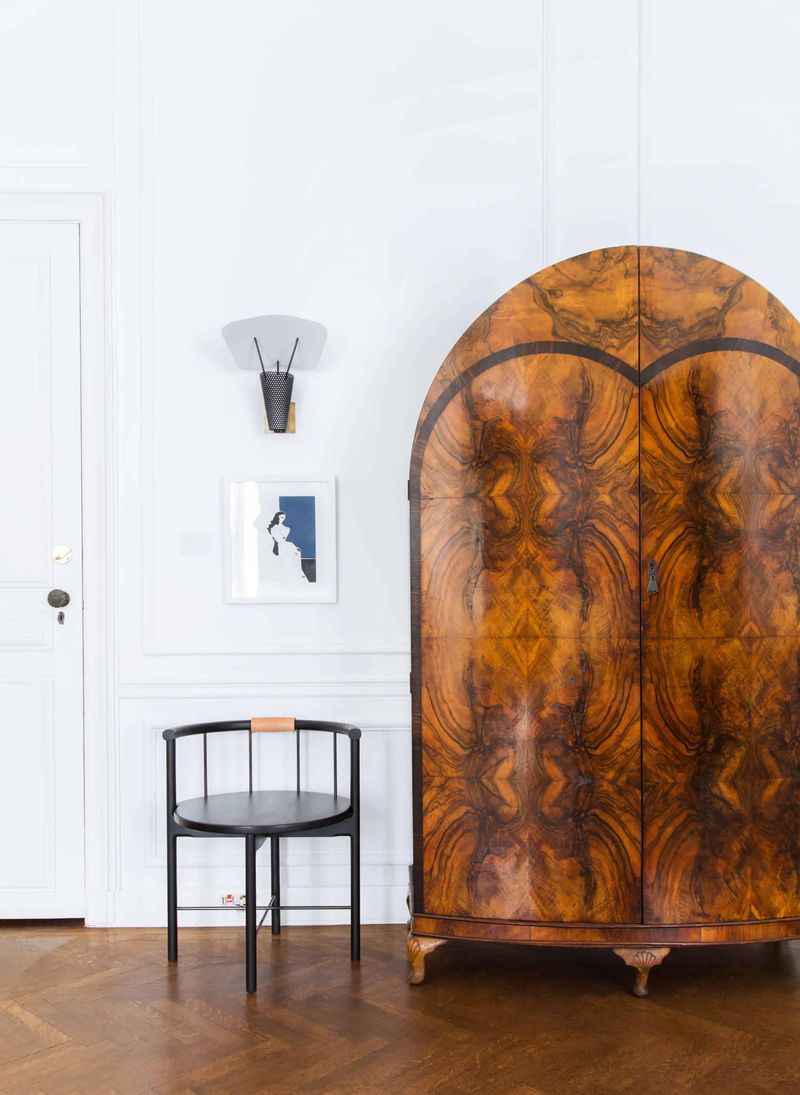
Found a show-stopping 1920s armoire that screams for attention? Pair it with sleek, understated contemporary pieces that won’t compete for the spotlight.
Contrasting ornate vintage statements with clean modern lines creates visual breathing room and prevents decade-mixing from becoming chaotic. Your guests will appreciate how the vintage treasure stands out while modern pieces provide calming counterpoints throughout the space.
3. Mix Metals to Create Visual Interest
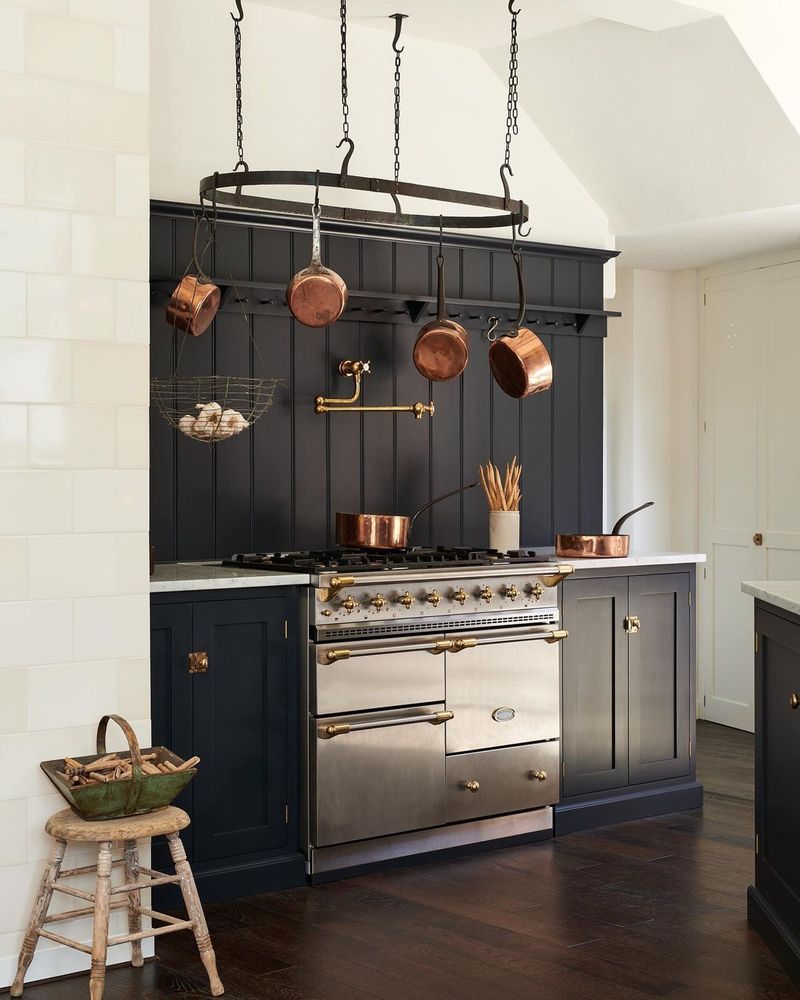
Gone are the days when all hardware needed to match perfectly. Combining brass fixtures from the 70s with contemporary matte black or brushed nickel creates deliberate dimension.
Metal mixing works best when limited to 2-3 finishes throughout a space. Try pairing vintage gold-toned picture frames with modern chrome lamps or industrial steel shelving with copper accents for a thoughtfully curated look that spans generations.
4. Use Rugs to Tie Various Styles Together
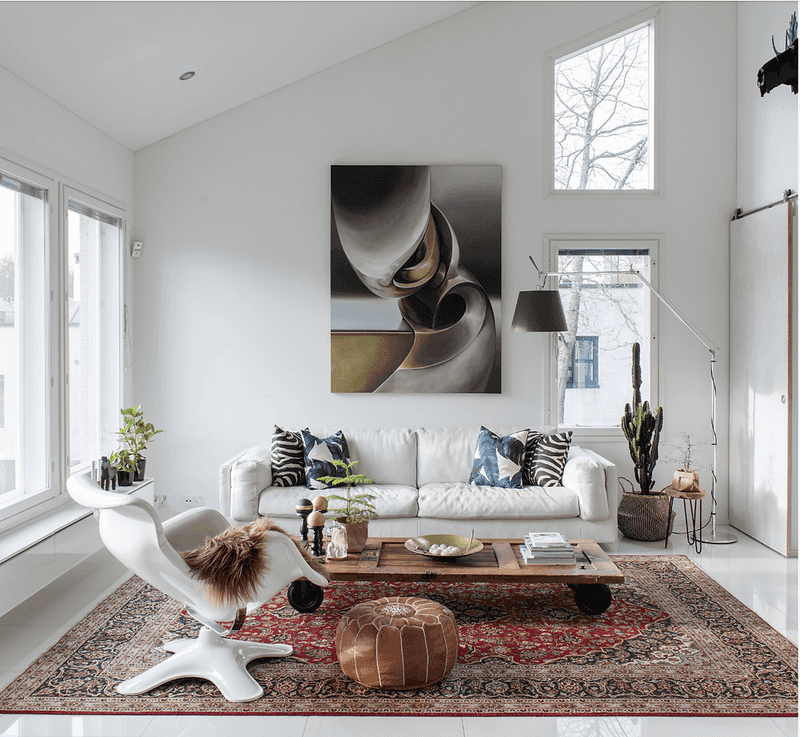
A well-chosen area rug acts like a visual handshake between furniture from competing eras. Look for designs incorporating colors from both your vintage and contemporary pieces.
Persian rugs surprisingly complement mid-century furniture, while abstract modern rugs can anchor traditional antiques. The magic happens when the rug’s colors repeat in small doses throughout the room—perhaps in throw pillows, artwork, or decorative objects spanning different time periods.
5. Incorporate Mid-Century Modern With Contemporary Furniture
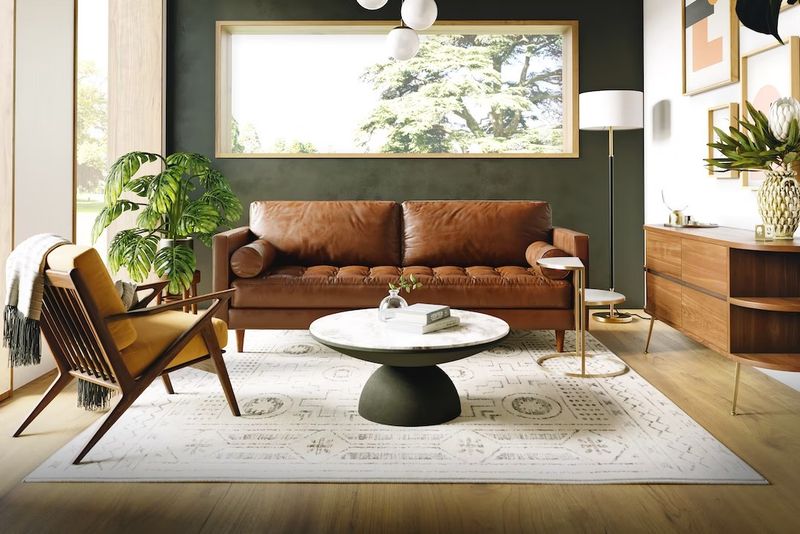
Mid-century pieces from the 1950s-60s play surprisingly well with today’s furniture thanks to their clean lines and functional simplicity. An Eames chair can sit comfortably beside a 2023 sofa without conflict.
Look for complementary silhouettes rather than matching periods. The tapered legs of mid-century pieces often echo the proportions of contemporary designs, creating a subtle through-line that connects decades without feeling forced or themed.
6. Blend Antique Wood With Sleek Surfaces
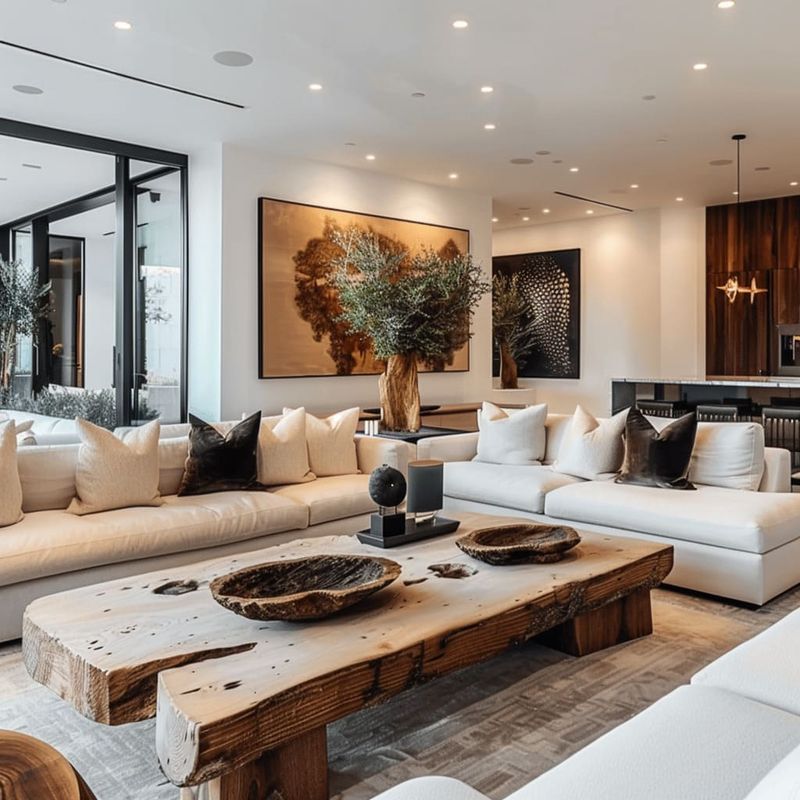
Nothing warms up a contemporary space faster than introducing weathered wood from bygone eras. A Victorian-era dresser can transform a stark modern bedroom into something with soul and history.
For maximum impact, juxtapose aged wood against sleek materials like glass, marble, or polished concrete. The textural contrast between a distressed farmhouse table and glossy contemporary chairs creates conversation-worthy tension that celebrates both periods.
7. Combine Retro Patterns With Solid Colors
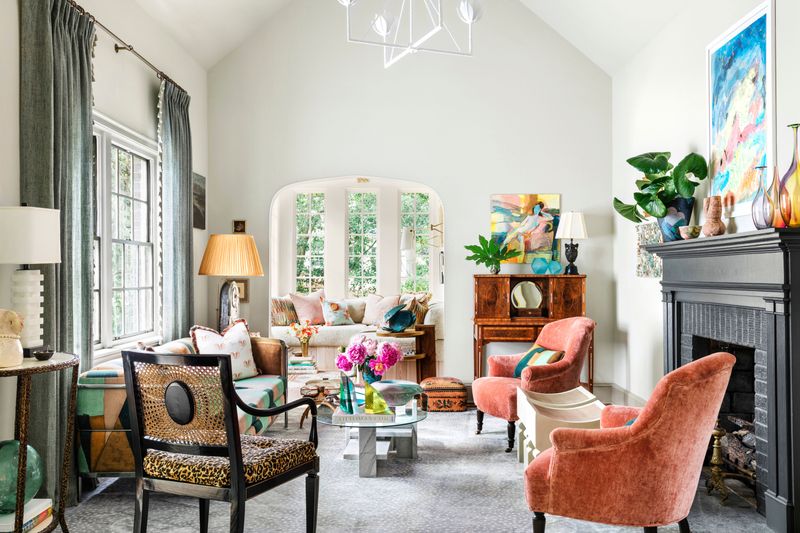
Psychedelic 1960s prints or bold 1980s patterns can feel overwhelming when used extensively. Professionals tame vibrant vintage patterns by surrounding them with solid, complementary colors from the same palette.
Consider recovering just one chair in that groovy vintage fabric you love, then echo its colors in solid-colored contemporary pieces nearby.
8. Layer Textures From Different Periods

Velvet from the 1920s, nubby boucle from the 1970s, and today’s performance fabrics can coexist beautifully when thoughtfully layered. Texture-mixing across decades adds tactile interest that flat, single-era designs often lack.
Consider how materials feel as well as look. A sleek leather sofa becomes more inviting with vintage crocheted throws. Rough industrial surfaces soften beside silk pillows from another era. When textures complement rather than match, spaces feel collected rather than decorated.
9. Create Focal Points With Statement Vintage Items

Every room benefits from a conversation piece. Vintage items with strong personalities—like a 1930s radio cabinet or 1970s hanging chair—make perfect focal points in otherwise contemporary settings.
Allow these statement pieces breathing room by keeping surrounding elements simpler. A vintage chandelier becomes even more spectacular when it’s not competing with other decorative elements. Your eye-catching retro find will anchor the space while bridging time periods.
10. Keep Color Palettes Consistent Across Decades
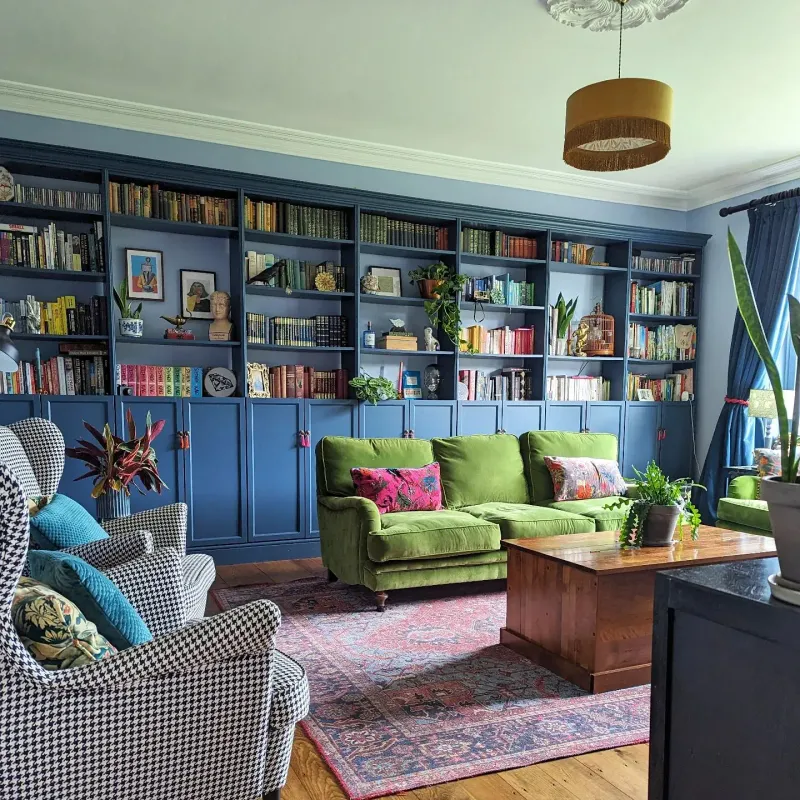
While furniture styles may span centuries, limiting your color scheme creates cohesion. Professional designers often select 3-5 colors to repeat across all elements regardless of their era.
A 1940s secretary desk painted the same blue as your contemporary kitchen cabinets creates visual connection despite their different origins. Color consistency is the secret language that makes disparate pieces from various decades speak to each other across time.
11. Use Lighting To Highlight Eclectic Pieces

Strategic lighting transforms decade-mixing from chaotic to curated. Spotlights or picture lights aimed at vintage treasures elevate them to art piece status within contemporary settings.
Mixing lighting styles themselves creates additional layering. A Victorian crystal chandelier can hang above an industrial concrete dining table when both are properly illuminated. Remember that vintage lamps often cast warmer light than modern LEDs—use this temperature variation intentionally for atmosphere.
12. Mix Old Artwork With New Frames
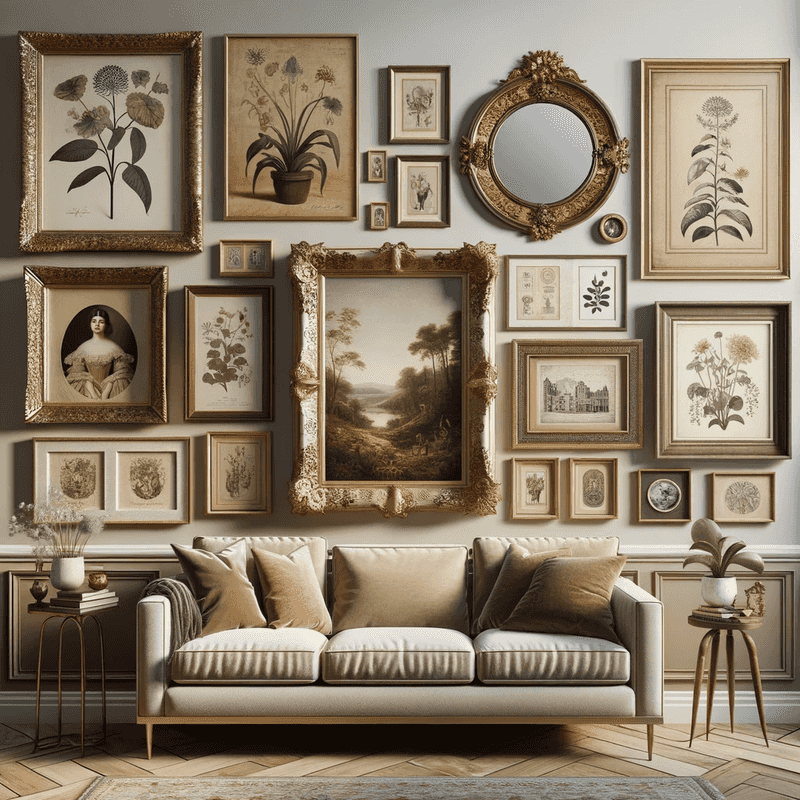
Art offers infinite opportunities for decade-blending. Vintage prints or paintings take on fresh relevance when placed in contemporary frames—or vice versa.
Try grouping artwork from different periods that share subject matter or color schemes. A modern abstract might unexpectedly complement Victorian botanical illustrations when their hues align. Gallery walls become especially powerful when they tell a cross-generational story through thoughtfully mixed artistic styles.
13. Integrate Classic Accessories With Trendy Decor
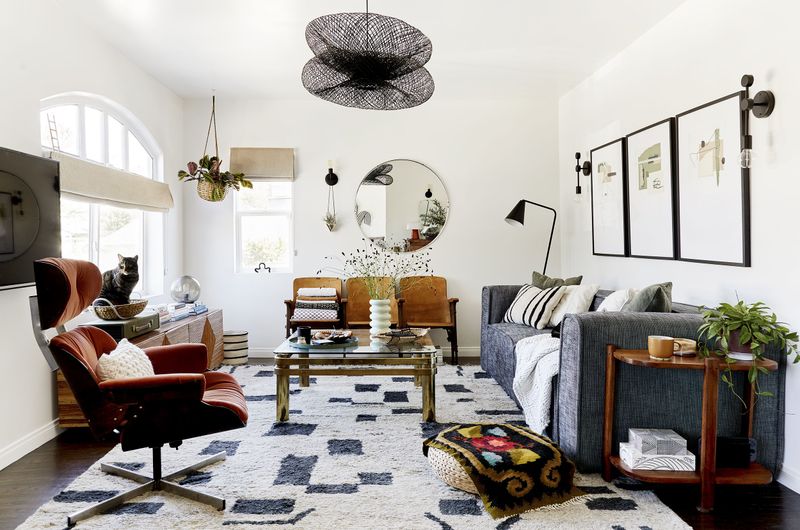
Small accessories offer low-commitment ways to experiment with decade-mixing. Vintage books, cameras, or typewriters bring character to contemporary shelving systems without dominating the aesthetic.
Arrange objects in unexpected pairings—a mid-century ceramic vase holding fresh flowers beside a brand-new tech gadget. Professionals often group accessories in threes with varying heights, balancing items from different eras but similar color families for cohesive vignettes.
14. Don’t Overcrowd—Allow Pieces To Breathe
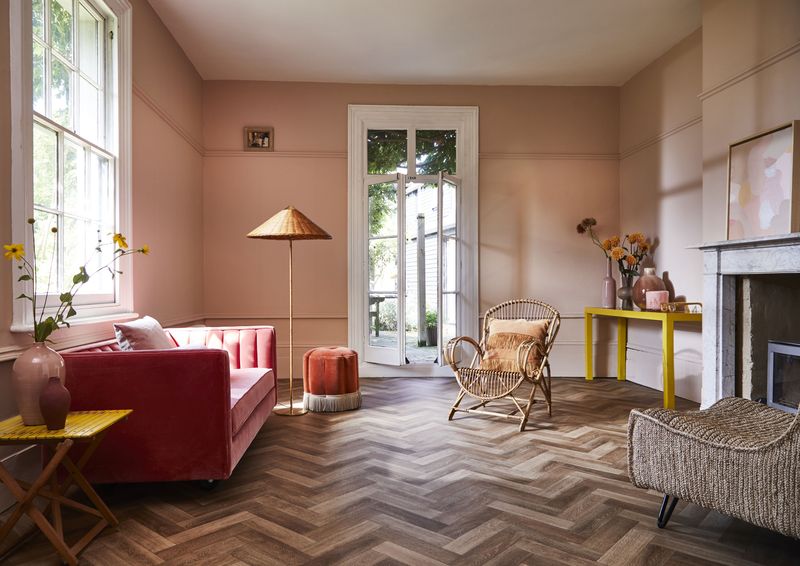
Mixing decades successfully requires restraint. Each notable piece needs visual space to be appreciated rather than becoming lost in a cluttered time-capsule effect.
Follow the 80/20 rule: if 80% of your furniture is contemporary, you can feature 20% standout vintage pieces without overwhelming the space. Empty space isn’t wasted—it’s necessary breathing room that allows your carefully curated multi-era elements to shine individually.
15. Trust Your Instincts to Find a Cohesive Balance
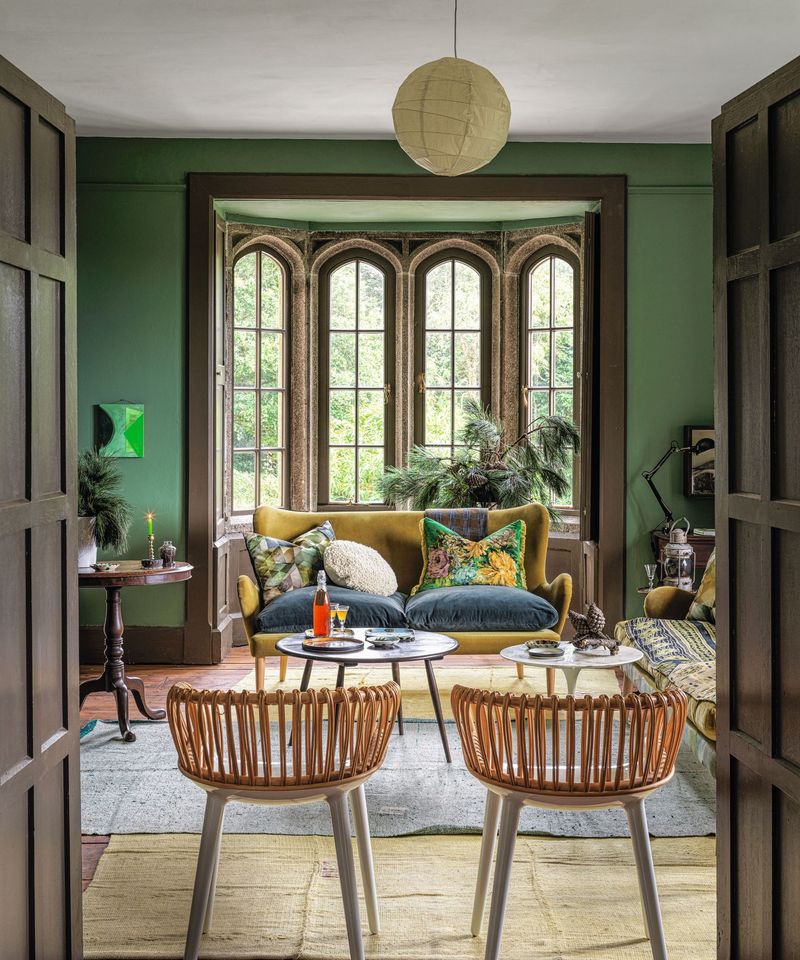
Beyond all technical advice, successful decade-mixing ultimately relies on intuition. If certain pieces from different eras feel right together to you, they probably are—even if design rules suggest otherwise.
Designers often recommend the “squint test”: step back, squint your eyes, and assess whether the overall composition feels balanced. Your personal connection to objects matters more than strict adherence to design principles when creating a home that reflects your unique story.

